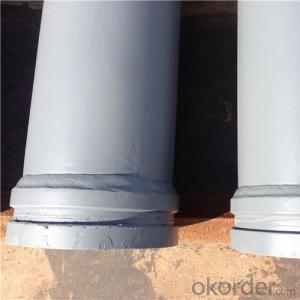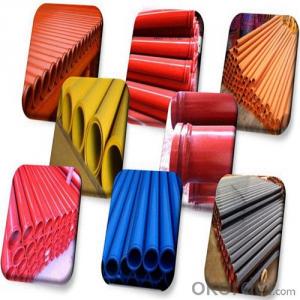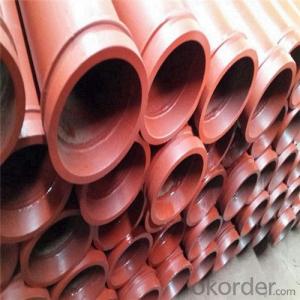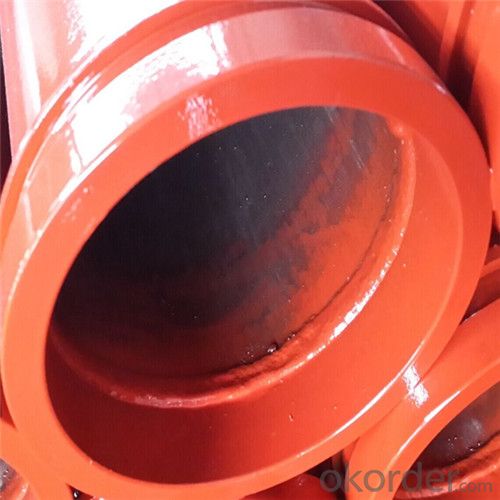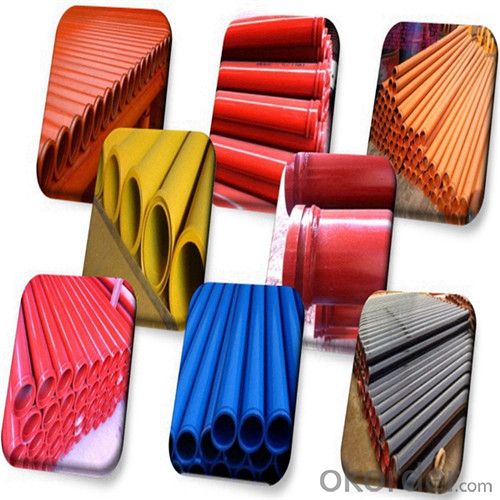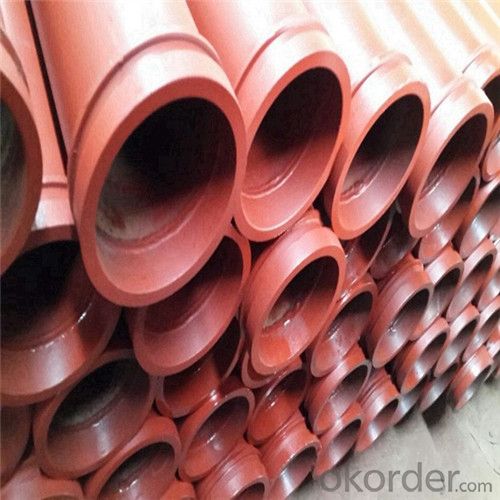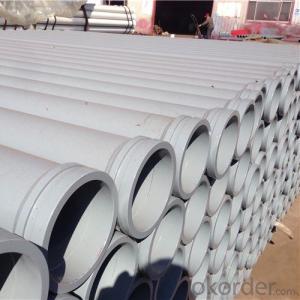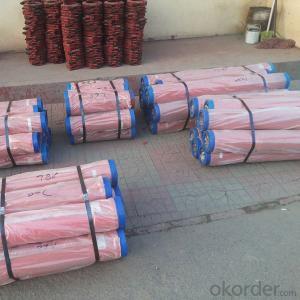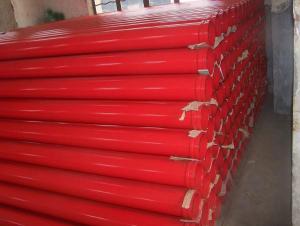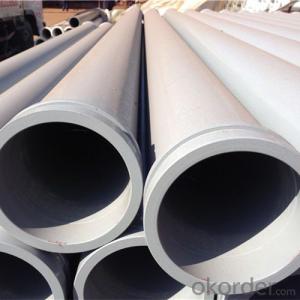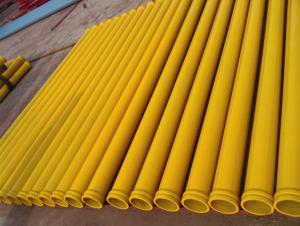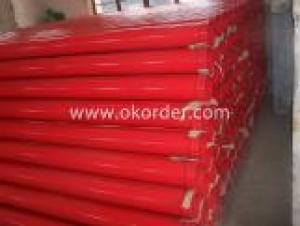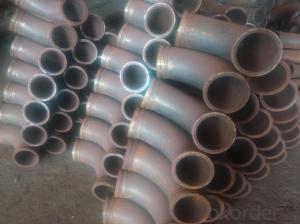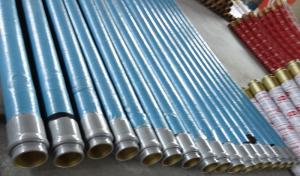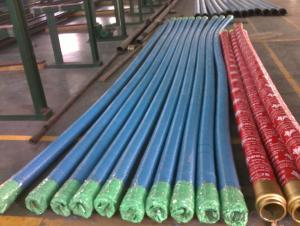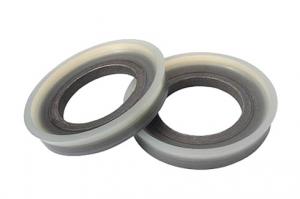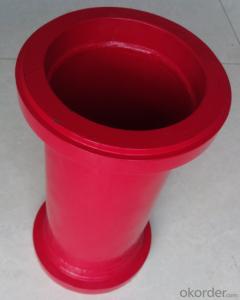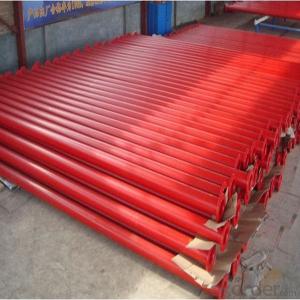3M 45Mn2 Delivery Pipe for Concrete Pump
- Loading Port:
- Tianjin
- Payment Terms:
- TT or LC
- Min Order Qty:
- 50 pc
- Supply Capability:
- 5000 pc/month
OKorder Service Pledge
OKorder Financial Service
You Might Also Like
3M 45Mn2 Delivery Pipe for Concrete Pump
1. Structure of 3M 45Mn2 Delivery Pipe for Concrete Pump:
St52 Weld Pipe: Main use for Trailer-mounted pump, thickness has 4.0mm, 4.5mm, 5mm. Compare with for Truck-mounted pump. Weld pipe has cheaper price, so it is popular in Saudi, Pakistan, India, etc. Unit Price is about 30USD-33USD.
St52 Seamless Pipe: Now More People like use this kind for Truck Pump and Trailer Pump because of the quality is better and it is seamless kind, so this kind pipe is most popular in Middle East Price About 34USD-37USD.
Wear Resistant Pipe: Use for Truck Pump, Wear Resistant Layer is 2.5mm.Through heat treatment way make this pipe more strong (HRC60-62), Using Life: 25,000m³-35,000m³ Price about 65USD-68USD.
2. Main Features of 3M 45Mn2 Delivery Pipe for Concrete Pump:
• In case of quality problem the company provide free replacement.
• Provide consumers with regular visits
• Ensure the supply of ancillary parts
• Our company passed the ISO9000 certification, the product through 3C certification in full compliance with national standards
3. 3M 45Mn2 Delivery Pipe for Concrete Pump Images
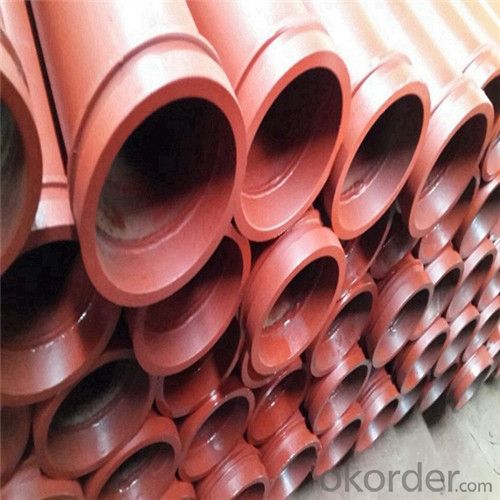
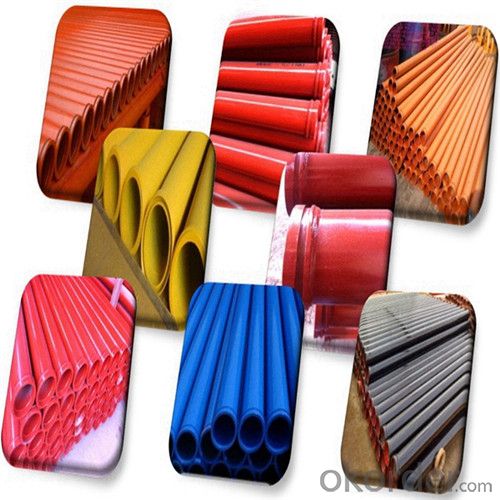
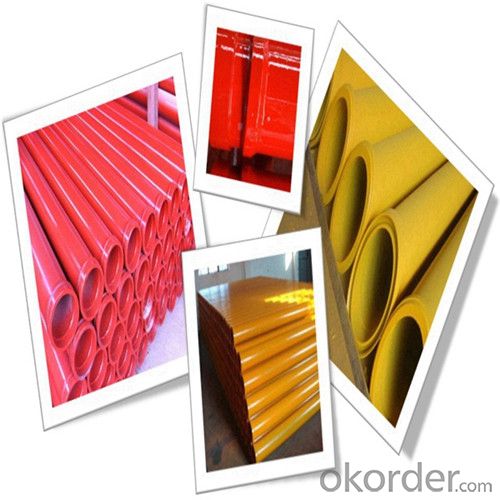
4. 3M 45Mn2 Delivery Pipe for Concrete PumpSpecification
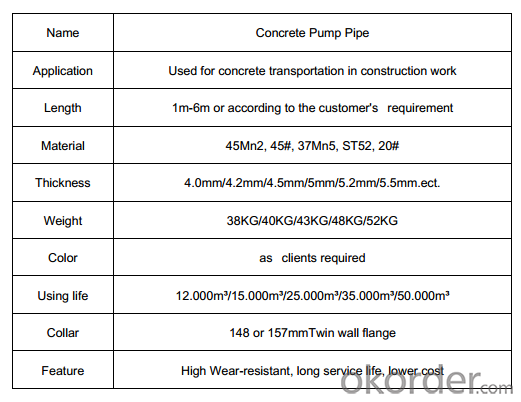
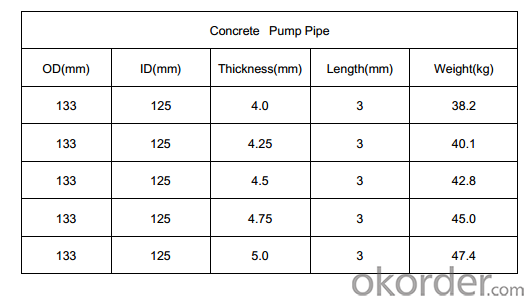
Production Process
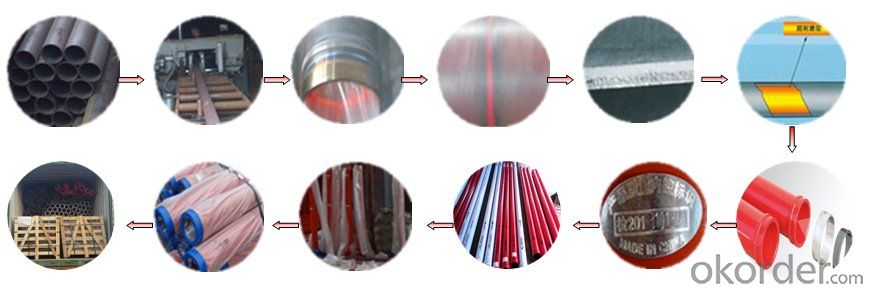
5. FAQ:
①Is your products exported a lot?
We have exported to many, many countries. Every year we ship more than 30 containers of these spare parts. Our main market is in Middle-east, Asia & Africa.
②How to guarantee the quality of the products?
We have established the international advanced quality management system,every link from raw material to final product we have strict quality test;We resolutely put an end to unqualified products flowing into the market. At the same time, we will provide necessary follow-up service assurance.
③How long can we receive the product after purchase?
In the purchase of product within three working days, we will arrange the factory delivery as soon as possible. The specific time of receiving is related to the state and position of customers. Commonly 15 working days can be served.
6. Why choose us
• We are a comprehensive manufacturing and trading company.
• Our company is one of the biggest manufacturing and trading companies in China.
• We have been specialized in producing concrete pump spare parts and specialized in producing all kinds of concrete pump parts. As Concrete Pump Pipe, Concrete Pump Elbow, Concrete Pump Rubber Hose, Concrete Pump Wear Plate, Concrete Pump S Valve, Concrete Pump Piston and so on.
• We are famous for our superior quality, competitive prices, first-class craftworks, safe package and prompt delivery.
• We have been supplying concrete pump parts for SCHWING, PUTZMEISTER, SANY, CIFA, KYOKUTO, ZOOMLION for 10 years, so we can promise you the quality and best price.
- Q: Are there any special tools required for replacing concrete pump spare parts?
- Special tools are necessary for replacing concrete pump spare parts. The required tools differ based on the specific part being replaced. However, some commonly used tools include wrenches, sockets, hydraulic jacks, cranes or hoists, and torque wrenches. Certain parts may also necessitate specialized tools like concrete saws, chisels, or drills to remove old parts or prepare surfaces for installation. To ensure proper replacement of concrete pump spare parts, it is crucial to refer to the manufacturer's guidelines or seek professional advice.
- Q: Are there any specific recommendations for the inspection and testing of concrete pump spare parts?
- Concrete pump spare parts come with specific recommendations for inspection and testing. To begin with, it is essential to visually examine the spare parts for any damage, such as cracks, dents, or excessive wear. Carefully inspect the parts for any irregularities or abnormalities. Next, it is advised to conduct non-destructive testing (NDT) to guarantee the integrity and quality of the spare parts. NDT methods like ultrasonic testing, magnetic particle testing, or dye penetrant testing can be utilized to identify any hidden flaws or defects in the parts. These tests are beneficial in detecting potential issues that might impact the performance or safety of the concrete pump. Additionally, it is recommended to verify the dimensions and tolerances of the spare parts to ensure they adhere to the manufacturer's specifications. Precision measuring tools can be employed to compare the measurements with the required specifications. Any deviations should be documented and addressed accordingly. Furthermore, functional testing should be carried out to ensure that the spare parts are functioning as intended. This involves installing the parts in the concrete pump and conducting various tests to verify their functionality and performance. For instance, the pump's flow rate, pressure, and efficiency can be tested to ensure optimal performance. Lastly, it is of utmost importance to adhere to the manufacturer's guidelines and recommendations for inspecting and testing concrete pump spare parts. These guidelines provide specific instructions and procedures for accurately and safely inspecting and testing each type of spare part. It is crucial to consult the manufacturer's documentation and seek professional advice if necessary.
- Q: How does a hopper vibrator prevent concrete blockages?
- A hopper vibrator is a mechanical device designed to prevent concrete blockages in construction equipment, such as concrete pumps and mixers. It works by applying vibrations to the hopper, which is the large container where the concrete is stored before it is poured or transferred. The main reason concrete blockages occur is due to the tendency of the material to settle and become compacted, especially when it is stored for a long time or during transportation. This can lead to clogging and obstruction of the flow of concrete, slowing down the construction process and potentially causing damage to the equipment. By using a hopper vibrator, the vibrations are transmitted to the concrete within the hopper, effectively preventing it from settling and compacting. The vibrations create a loosening effect on the concrete particles, ensuring that they remain in a more fluid state. This allows for a continuous and smooth flow of concrete, preventing any blockages or obstructions from occurring. Additionally, the vibrations from the hopper vibrator also help to dislodge any potential blockages that may have already formed. The shaking motion can break up clumps of concrete or other debris that might be blocking the flow, allowing for uninterrupted movement of the material. Overall, a hopper vibrator is an essential tool in construction equipment as it helps to maintain a consistent flow of concrete, preventing blockages and ensuring the smooth and efficient operation of the construction process.
- Q: How often should hopper agitator shaft bearings be inspected or replaced in a concrete pump?
- The frequency at which hopper agitator shaft bearings in a concrete pump need to be inspected or replaced can vary depending on several factors. These factors include the recommendations from the manufacturer, the operating conditions, and the maintenance history of the pump. However, as a general rule, it is advisable to inspect these bearings at least once a year or every 500-1000 hours of operation, whichever comes first. During regular inspections, it is crucial to check for any indications of wear, damage, or excessive movement in the bearings. If any abnormalities are identified during the inspection, immediate action should be taken to address the problem. In some instances, lubrication or adjustment might be enough to rectify minor issues, whereas more significant damage or wear may necessitate replacing the bearings. It is essential to recognize the vital role that hopper agitator shaft bearings play in ensuring the smooth and efficient functioning of the concrete pump. Neglecting regular inspections or delaying necessary replacements can result in increased downtime, reduced productivity, and potential safety risks. Therefore, it is recommended to adhere to the manufacturer's guidelines and seek advice from experienced technicians or specialists for a more precise evaluation of the specific intervals for inspection and replacement in your concrete pump.
- Q: What are the different types of concrete pump hopper cylinders?
- In the construction industry, there exists a variety of concrete pump hopper cylinders that are commonly utilized. These cylinders possess a vital function in the operation of concrete pumps, as they supply the necessary pressure and force to facilitate the movement of concrete throughout the system. One particular kind of concrete pump hopper cylinder is the single-acting cylinder. This cylinder operates by utilizing hydraulic pressure to extend the piston rod, which subsequently propels the concrete out of the hopper and into the pumping system. Single-acting cylinders are renowned for their simplicity and reliability, thus making them a favored choice for numerous construction projects. Another type of concrete pump hopper cylinder is the double-acting cylinder. As the name implies, this cylinder operates in both directions, enabling a more efficient and powerful pumping process. Double-acting cylinders possess the capability of pushing the concrete out of the hopper during the extension stroke, as well as pulling the piston rod back during the retraction stroke. Consequently, this results in a greater pumping capacity and increased productivity. Furthermore, there is also a range of sizes and capacities available for concrete pump hopper cylinders. These sizes vary, with smaller cylinders suitable for smaller construction projects, and larger cylinders capable of handling heavy-duty pumping operations. The selection of cylinder size relies on factors such as the volume of concrete to be pumped, the distance and height of the pumping location, and the specific requirements of the project. In conclusion, the assortment of concrete pump hopper cylinders encompasses single-acting cylinders and double-acting cylinders. Each type possesses its own advantages and is suitable for different construction applications. The determination of the cylinder's size and capacity should be based on the specific necessities of the project. Ultimately, the selection of the appropriate cylinder type is essential in guaranteeing efficient and effective concrete pumping operations.
- Q: What are the different types of concrete pump hopper agitator motors?
- There are generally two types of concrete pump hopper agitator motors: electric motors and hydraulic motors. Electric motors are powered by electricity and are commonly used in smaller and portable concrete pumps. Hydraulic motors, on the other hand, are driven by hydraulic power generated by the concrete pump itself and are typically used in larger and stationary concrete pumps.
- Q: How long does it take to receive concrete pump spare parts after placing an order?
- The time it takes to receive concrete pump spare parts after placing an order can vary depending on several factors. Firstly, it depends on the availability of the specific spare parts you have ordered. If the parts are readily available in stock, the delivery time can be relatively quick. However, if the parts are not in stock and need to be manufactured or sourced, it may take longer to receive them. Secondly, the location and distance between the supplier and your location also play a role in the delivery time. If the supplier is in close proximity, the parts can be delivered within a few days. However, if the supplier is located far away or in a different country, it may take longer due to shipping and customs processes. Furthermore, the shipping method you choose can also impact the delivery time. Expedited shipping options can ensure quicker delivery, but at an additional cost. Standard shipping methods may take longer but are usually more cost-effective. Lastly, the efficiency and responsiveness of the supplier also come into play. A reliable supplier with a streamlined ordering and shipping process will likely be able to deliver the spare parts in a shorter time frame. In conclusion, the time it takes to receive concrete pump spare parts after placing an order can vary based on factors such as availability, location, shipping method, and supplier efficiency. It is advisable to inquire about estimated delivery times when placing the order to have a better understanding of when the parts will be delivered.
- Q: What are the different types of concrete pump clamps?
- There are several different types of concrete pump clamps, including snap clamps, bolt clamps, wedge clamps, and quick release clamps. These clamps are used to secure pipes and hoses in place and ensure a tight and secure connection during concrete pumping operations.
- Q: How often should concrete pump cylinders be inspected and replaced?
- Concrete pump cylinders should be inspected regularly, ideally on a daily basis, to ensure they are in proper working condition. The frequency of replacement depends on several factors including the intensity of usage, maintenance practices, and the quality of the concrete being pumped. Generally, concrete pump cylinders should be replaced when they show signs of significant wear and tear or when they no longer meet the required performance standards.
- Q: How can a faulty concrete pump control valve affect the pumping operation?
- The pumping operation can be adversely affected by a defective control valve for the concrete pump. To begin with, it can result in a lack of control over the rate at which the concrete flows. The control valve is responsible for regulating the quantity of concrete being pumped, and if it is faulty, it may not be able to adjust the flow rate accurately. This can lead to an inefficient operation due to an excessive or insufficient amount of concrete being pumped. Moreover, an unreliable control valve can cause inconsistent flow of the concrete. The valve is designed to maintain a steady and consistent flow, but if it is not functioning properly, it can cause fluctuations in the flow. As a consequence, the concrete may be distributed unevenly, thus affecting the quality and integrity of the pumped concrete. Additionally, a faulty control valve can contribute to accelerated wear and tear on the pump and other components. When the valve does not operate correctly, it can subject the pump to excessive pressure or strain, resulting in increased wear on the equipment. Consequently, breakdowns may occur more frequently or repairs may be needed, which can be both time-consuming and expensive. On the whole, a defective control valve for the concrete pump can have a significant impact on the pumping operation by causing a loss of control over the flow rate, inconsistent flow of the concrete, and increased wear and tear on the equipment. It is crucial to regularly inspect and maintain the control valve to ensure its proper functioning and prevent these negative consequences.
Send your message to us
3M 45Mn2 Delivery Pipe for Concrete Pump
- Loading Port:
- Tianjin
- Payment Terms:
- TT or LC
- Min Order Qty:
- 50 pc
- Supply Capability:
- 5000 pc/month
OKorder Service Pledge
OKorder Financial Service
Similar products
Hot products
Hot Searches
Related keywords
